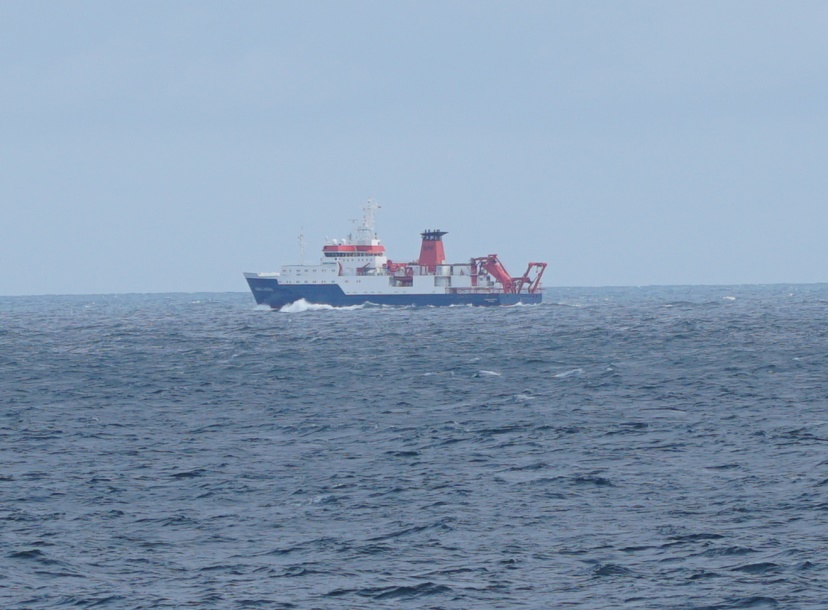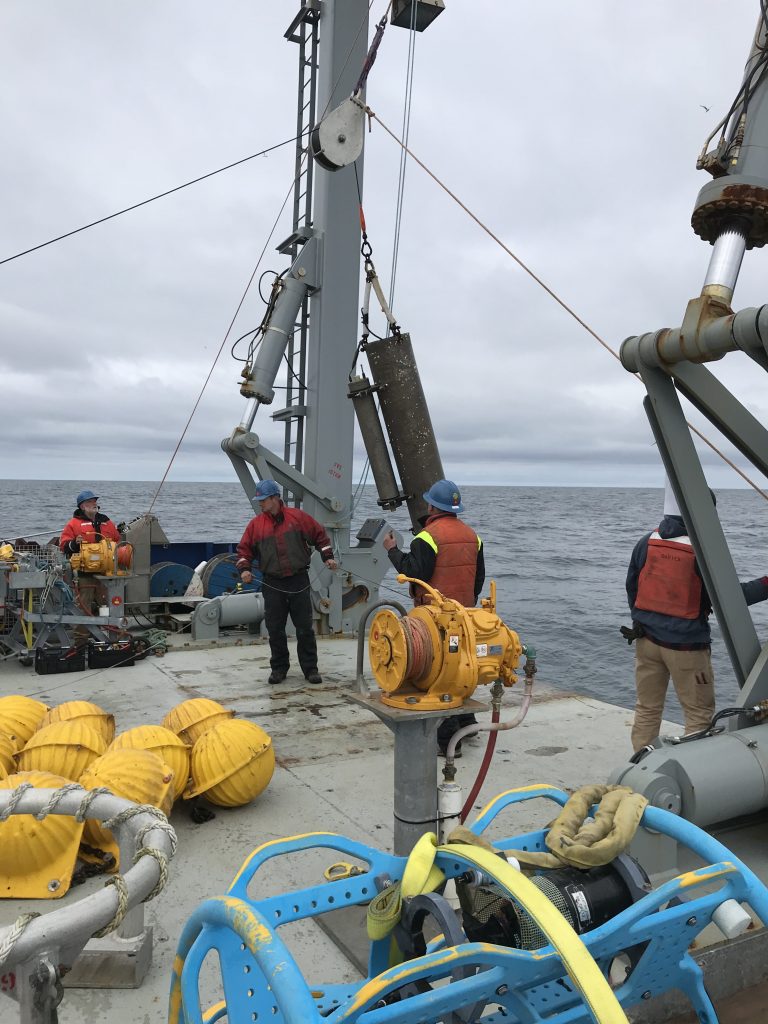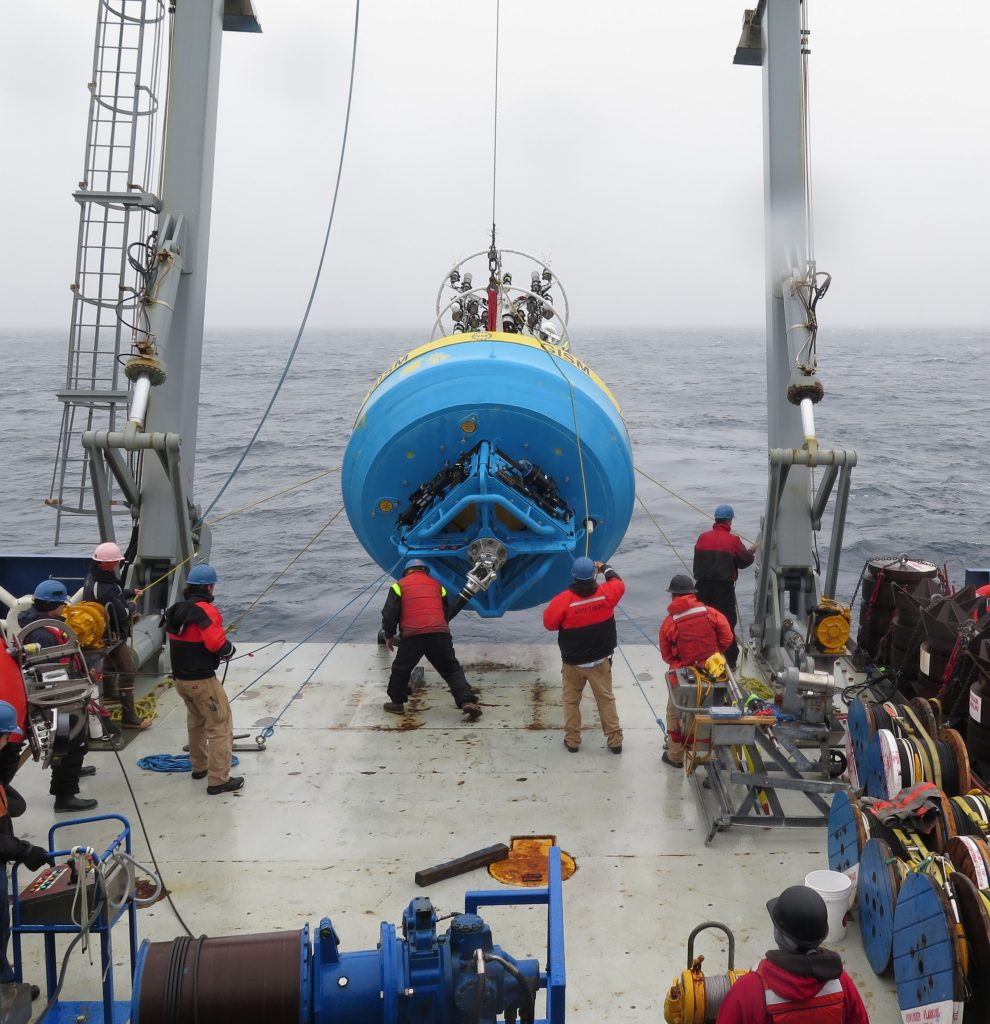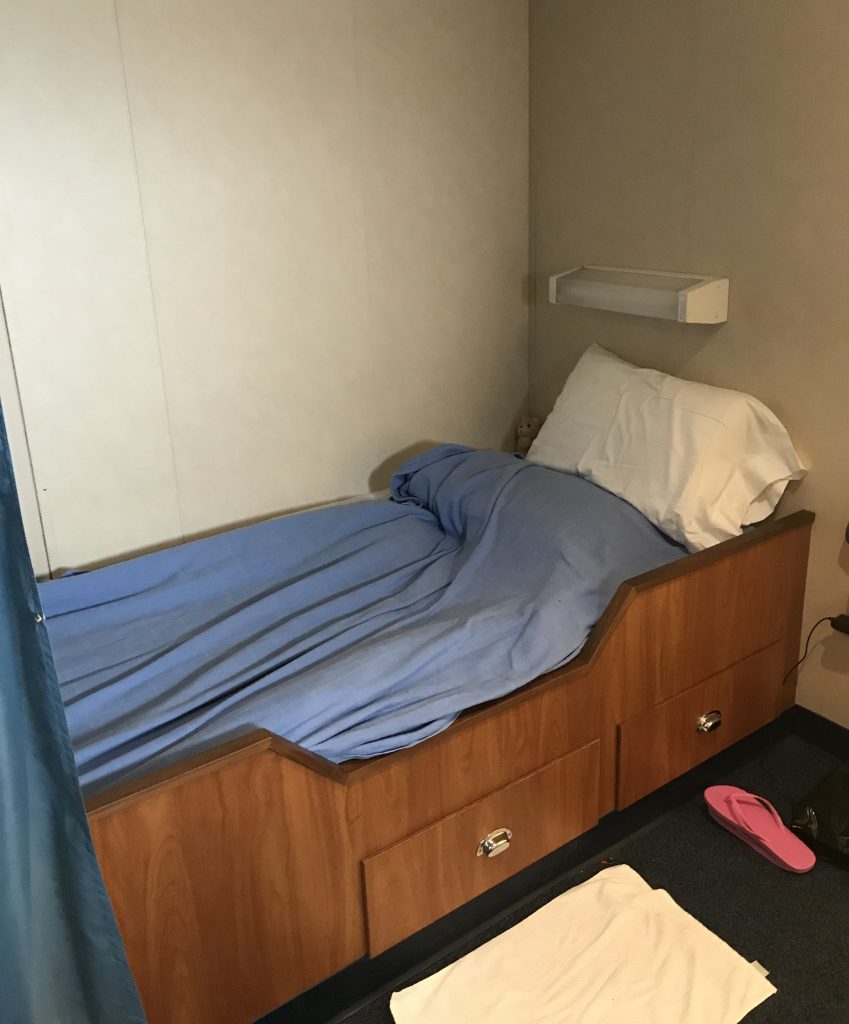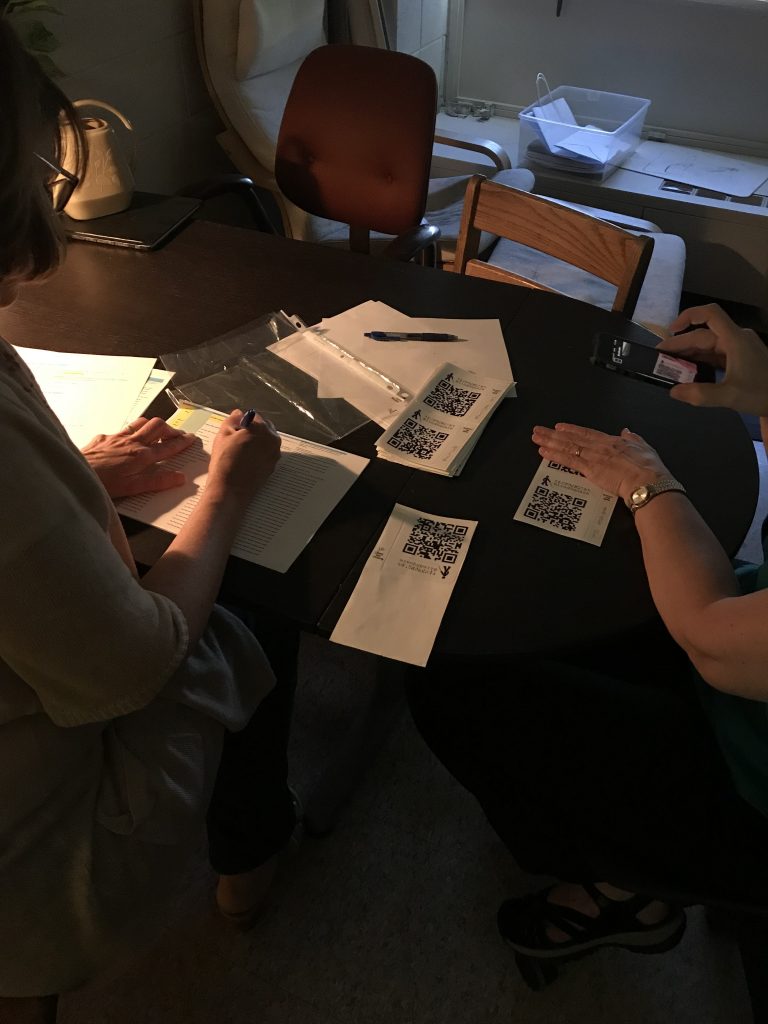It’s a Small World After All
As a little kid, I was always fond of the song that went with the Disney attraction, “It’s a Small World After All.” I remember having a 45 rpm record of the song, which I would play over and over. I’m guessing that I saw the attraction at its debut at the 1964 New York…
OSNAP Float Field Phase Draws to a Close
For the past several days, the focus of activity on board the Neil Armstrong has been on the OSNAP project. OSNAP stands for Overturning in the Subpolar North Atlantic Program, and is an international effort to measure all the currents moving northward across 60N latitude, as well as the heat those currents carry. As described…
Sound for Science
I find it so interesting that the object of my research is mostly invisible. No one, sighted or not, can “see” ocean currents below the surface. In the same way, no one can “see” the wind—we can see and hear the effects of wind—blowing leaves, horizontal snow, rattling windows. But the human eye can’t actually…
Anticipation…
We are a week into this cruise now, and the weather has still been amazingly cooperative. Every now and then, the winds pipe up to around 20 knots (short for nautical miles per hour—mariners and fliers measure distance in nautical miles while landlubbers use statute miles—the nautical mile is about 15% longer than a statute…
A Sentinel for Observing the Ocean
This research cruise is dedicated to four different projects, of which ours is just one. The primary activity is the annual replacement of the Ocean Observatories Initiative (OOI) moorings in the Irminger Sea, which is located east of Greenland. The Irminger Sea Array is part of the much larger OOI project with long-term observing sites…
After 40 years Going to Sea … a ‘First’ for Me on this Cruise
A typical cabin on a research vessel looks mostly like a college dorm room—bunk beds, a desk, drawers and lockers for clothes, and that is about it. Most often, the two who share the cabin also share a bathroom (called a head in boat language) with two people from another cabin. Sometimes several cabins share…
Where’s My Room!
Blind people who use a smart phone are likely taking advantage of one of the most important new technologies of the past couple of decades, that is, the Global Positioning System (GPS for short). What is the GPS anyway? The GPS is a large number of satellites orbiting the Earth that allow you to find…
DIY (“Do It Yourself”) Moorings
In my last post, I described the main goal of our upcoming research cruise on the R/V Armstrong, that is, to set up four deep-sea moorings in the ocean east of Greenland. These moorings will have sensors on them to measure the water temperature, salinity, and the speed and direction of the currents. They will…
Shipping Day!
In some ways, today is the real first day of the upcoming oceanographic research cruise on the R/V Armstrong. This is the day that all the equipment for the cruise is being loaded into a shipping container that will be trucked to Portland, Maine and loaded onto a container vessel headed for Iceland. The Armstrong…
Time to Go to Sea Again!
It has been four years since my last oceanographic research cruise. It was July 2014 when I joined fellow scientists and graduate students in Iceland to board the Research Vessel Knorr to kick off an international expedition to put in place a huge coast-to-coast array of instruments across the North Atlantic Ocean. This array of…
About Amy Bower
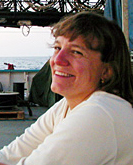 Amy Bower is a physical oceanographer at the Woods Hole Oceanographic Institution. She has been chasing ocean currents in the Atlantic and Indian Oceans for over 25 years, primarily by releasing acoustically tracked floats far below the sea surface. Legally blind since her mid-20s, Amy uses adaptive technology to continue her research.
Amy Bower is a physical oceanographer at the Woods Hole Oceanographic Institution. She has been chasing ocean currents in the Atlantic and Indian Oceans for over 25 years, primarily by releasing acoustically tracked floats far below the sea surface. Legally blind since her mid-20s, Amy uses adaptive technology to continue her research.
Related Links
Subscribe by Email
Completely spam free, opt out any time.
